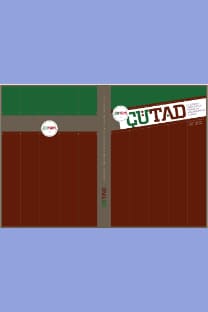KUZEY MAKEDONYA'DA TÜRKÇE EĞİTİMİ
TURKISH EDUCATION IN NORTH MACEDONIA
___
- Açık, F. ve Yavuz, İ. R. (2020). Balkan Türklerinin gözünde Türkçe. Türklük bilimi araştırmaları, 48, 39-54.
- Akalın, Ş. H. (2002). Makedonya’da eğitim dili olarak Türkçe. Türk Dünyası Dil ve Edebiyat Dergisi, 13, 7-13.
- Akkaya, A. ve Doyumğaç, İ. (2019). Yabancı dil olarak Türkçe öğretiminde metin türleri ve metin türlerine yönelik etkinlik örnekleri. Dil Kullanıcısı Bağlamında Kuramdan Uygulamaya Türkçenin Yabancı Dil Olarak Öğretimi içinde (Akay Ahmed, A. ve Fişekcioğlu, A., Ed.) (ss. 371-412). Ankara: Nobel.
- Ali, M., Çevik, İ. A., Ruşid, F., Özdemir, S. ve Yerlikaya, E. (2016). Makedonya'da Türkçe öğretimi, karşılaşılan güçlükler ve çözüm önerileri. Yunus Emre Enstitüsü Türkçenin Yabancı Dil Olarak Öğretiminde Yöntem ve Uygulamalar II (1. bs.) içinde (ss. 211-257). İstanbul: Kültür Sanat Basımevi.
- Aydın, G. (2018). İki dilli Türkçe öğretmenlerinin Türkçeye ilişkin metaforik algıları: Makedonya örneği. Akdeniz Eğitim Araştırmaları Dergisi, 12(25), 230-254.
- Baltacı, A. (2019). Nitel araştırma süreci: Nitel bir araştırma nasıl yapılır?. Ahi Evran Üniversitesi Sosyal Bilimler Enstitüsü Dergisi, 5(2), 368-388.
- Bektaş, G. (2020). Bir Rumeli kentinin modernleşmesi: Üsküp 1839-1912.
- Creswell, J. W. (2017). Nitel araştırma yöntemleri (Bütün, M. ve Demir, S.B., Trans. Ed.). İstanbul: Siyasal Kitapevi. Çelik, M. (2021). Kuzey Makedonya’da Türkçe eğitim ve öğretim. I. Uluslararası Balkanlarda Türk Dili ve Edebiyatı Araştırmaları Sempozyumu Bildiriler Kitabı, 261-267.
- Çelik, M. E. (2016). Bulgaristan'daki Türkçe öğretmenlerinin Türkçenin eğitimi - öğretimine ilişkin görüşlerinin incelenmesi. Ondokuz Mayıs Üniversitesi Eğitim Fakültesi Dergisi, 35(2), 69-81.
- Çelik, M. ve Denkova, J. (2014). Makedonya’da Türkçe eğitim. Trakya Üniversitesi 9. Uluslararası Balkan Eğitimi ve Bilim Kongresi, 749-752.
- Çelik, M. ve Gürel, Z. (2018). Makedonya’da Türkçe dilbilgisi öğretimi ve bu alanda yayımlanan kitaplar. Knowledge International Journal, 22(6), 1621-1626.
- Dalkılıç, M. (2019). Kuzey Makedonya Müslümanlarının günümüzde en yaygın sorunları ve çözüm önerileri. Düzce Üniversitesi Sosyal Bilimler Enstitüsü Dergisi, 9(1), 64-84.
- Demir, N. ve Kayadibi, N. (2018). Makedonya’da ilköğretim 7. sınıfta öğrenim gören Türk öğrencilerin konuşma becerilerinin farklı değişkenler açısından değerlendirilmesi. Ana Dili Eğitimi Dergisi, 6(1), 220-237.
- Demir, N., Kayadibi, N. (2012). Makedonya'dan Uzanan Türkçe Bir Köprü:'Köprü Dergisi'. Journal Of World Of Turks/Zeitschrift Für Die Welt Der Türken, 4(3).
- Hamzaoğlu, Y. (2010). Balkan Türklüğü I-II-III. Üsküp: Logos-A.
- Hasan, E. ve Adiller, S. (2017). Makedonya, Radoviş Türklerinin Türkçe eğitiminde sorunlar ve çözüm önerileri. Uluslararası Türk Kültür Coğrafyasında Sosyal Bilimler Dergisi, 2(1), 1-28.
- Karataş, Z. (2015). Sosyal Bilimlerde Nitel Araştırma Yöntemleri. Manevi Temelli Sosyal Hizmet Araştırmaları Dergisi, 1(1), 62-80.
- Kıymaz, M. S. ve Doyumğaç, İ. (2019). Türkçenin yabancı dil olarak öğretiminde temel kavramlar ve kurumlar. Türkçenin Yabancı Dil Olarak Öğretimi içinde (Kardaş, M. N., Ed.) (ss. 43-74). Ankara: Pegem Akademi.
- Kurt, Ö. (2020). Makedonya 5. sınıf Türkçe ders kitabı metin altı sorularının yenilenmiş bloom taksonomisi bilişsel süreç basamaklarına göre incelenmesi. Balkanlarda Türk Dili ve Edebiyatı Araştırmaları Dergisi, 2(2) , 31-48.
- Merriam, S. B. (2018). Nitel Araştırma (Turan, S., Çev.). Ankara: Nobel Akademik Yayıncılık.
- Neuman, W. L. (2012). Toplumsal Araştırma Yöntemleri: Nicel ve Nitel Yaklaşımlar I‐II (5. bs.). İstanbul: Yayın Odası.
- Ural, S. (2016). Tarihî perspektif ışığında Makedonya'da Türklerin gündelik yaşamı. Manisa Celal Bayar Üniversitesi Sosyal Bilimler Dergisi, 14(1).
- Yıldırım, A. ve Şimşek, H. (2021). Sosyal bilimlerde nitel araştırma yöntemleri (12. bs.). Ankara: Seçkin Yayıncılık.
- ISSN: 2587-1900
- Yayın Aralığı: Yılda 2 Sayı
- Başlangıç: 2016
- Yayıncı: Çukurova Üniversitesi Türkoloji Araştırmaları Merkezi
Merve ÇELİK KIRTAN, Akin EFENDIOGLU, Fatma KARAÇOBAN
ÇAĞDAŞ IRAK TÜRKMEN ŞAİRİ MEHMET ÖMER KAZANCI’NIN KORONAVİRÜS ŞİİRLERİ ÜZERİNE
ACÂ’İB İÇEREN ESERLER ARASINDA BABÜRNÂME’NİN HİNDİSTAN BÖLÜMÜ
NÂZIM HİKMET’İN DON KİŞOT BAŞLIKLI ŞİİRİNİN PSİKOLOJİK DANIŞMADA KULLANILABİLİRLİĞİNİN İNCELENMESİ
İKİNCİ MEŞRUTİYET DÖNEMİNDE ADANA DARÜLMUALLİMİN-İ İBTİDAİSİ 1908-1918
HURÛFÂT DEFTERLERİNDE KUŞADASI KAZASI (1045/1636-1250/1835)
AHMET REMZİ DEDE (AKYÜREK) HAYATI (1872-1944) VE TASAVVUFÎ / EDEBÎ YÖNÜ
YABANCILAR İÇİN TÜRKÇE / RUSÇA ÖĞRETİM KİTAPLARINDA KÜLTÜR UNSURLARI
OSMANLI DEVLETİ YENİLEŞME ÇABALARININ ATATÜRK’ÜN EĞİTİMİNE VE TÜRK DÜNYASI CEDİT HAREKETİNE KATKISI
ESKİ TÜRK YAZITLARININ TANIKLIĞINDA KARA BODUN İFADESİ ÜZERİNE DÜŞÜNCELER
